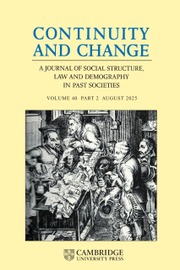Article contents
Newspaper reporting and attitudes to crime and justice in late-eighteenth- and early-nineteenth-century London
Published online by Cambridge University Press: 04 April 2007
Abstract
As other sources of printed information about crime, such as the Ordinary's Accounts of the lives of executed criminals, lost their audience in the final third of the eighteenth century, newspapers came increasingly to dominate printed discussions of crime. However, no substantial study of the overall nature of newspaper reporting on crime and criminal justice issues has yet been undertaken. By focusing on the London press from the 1780s to the early years of the nineteenth century, this study aims to address a range of questions about the structure of crime and justice reporting, about the selectivity of law and order news and about the types of narratives and discursive structures that can be found at different periods. In particular it highlights the ways in which the multi-vocal, sporadic, brief and sometimes chaotic styles of crime reporting in newspapers created a kaleidoscope of different and often contradictory messages about such issues as the prevalence of violent crime, the effectiveness of policing and penal institutions and the quality of justice meted out by the courts. The printed word had a much less integrative role in relation to law and order issues than historians have sometimes suggested.
- Type
- Research Article
- Information
- Continuity and Change , Volume 22 , Issue 1: Special Issue on Newspaper Reporting of Crime and Justice , May 2007 , pp. 73 - 112
- Copyright
- 2007 Cambridge University Press
- 27
- Cited by


